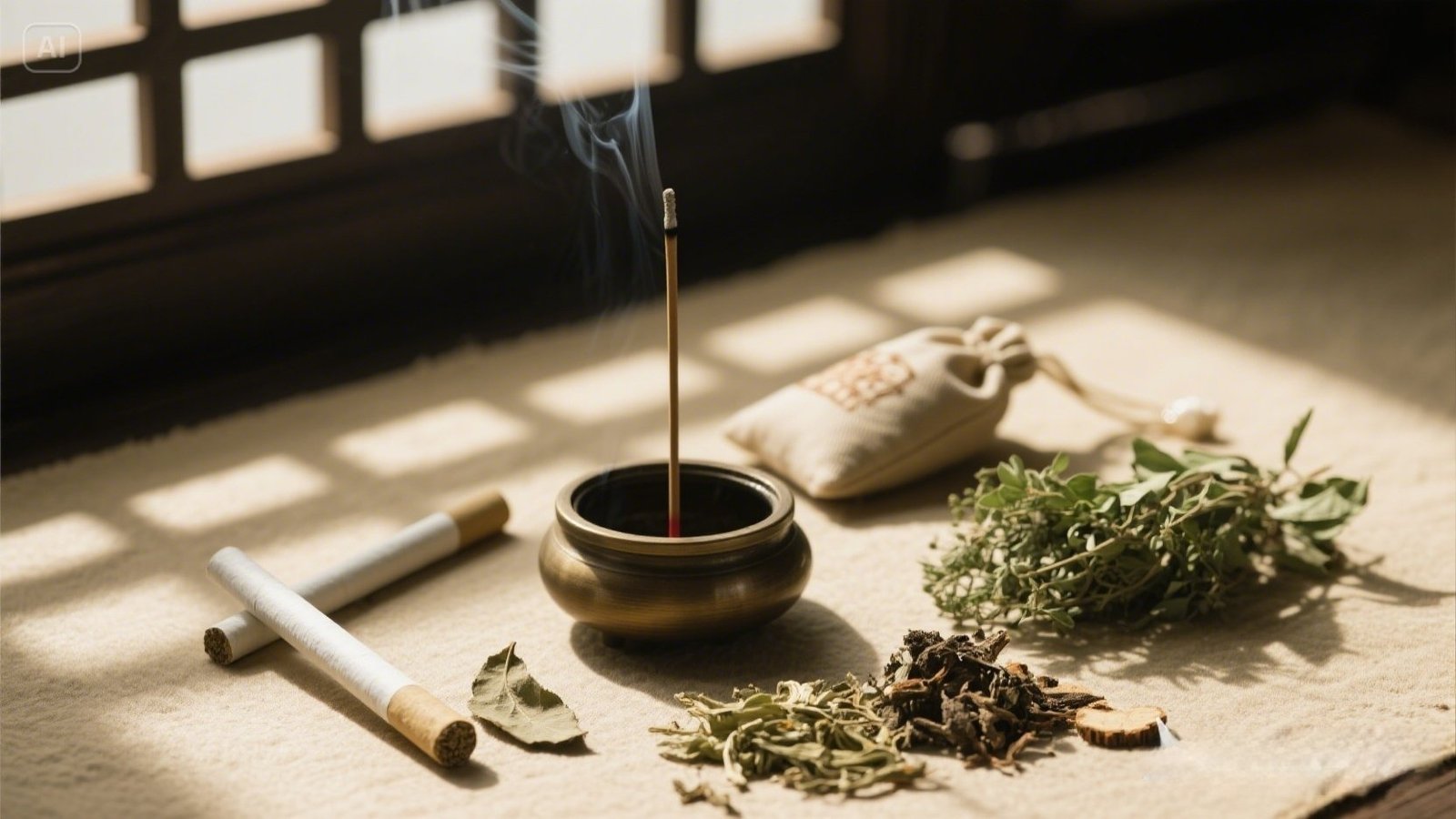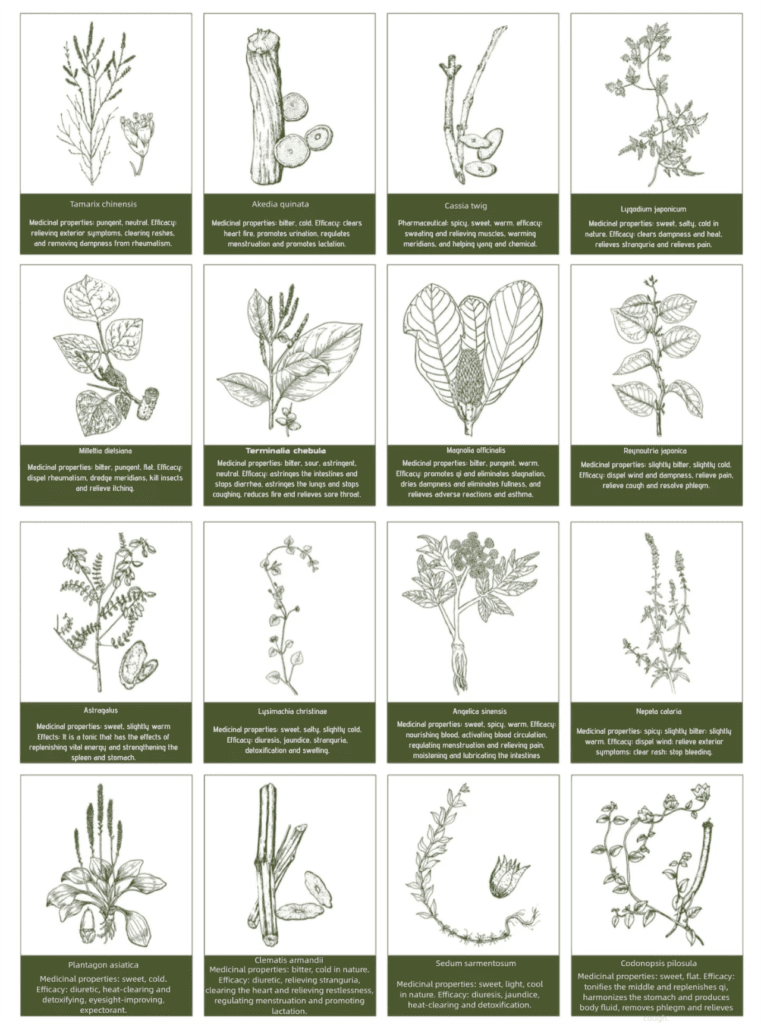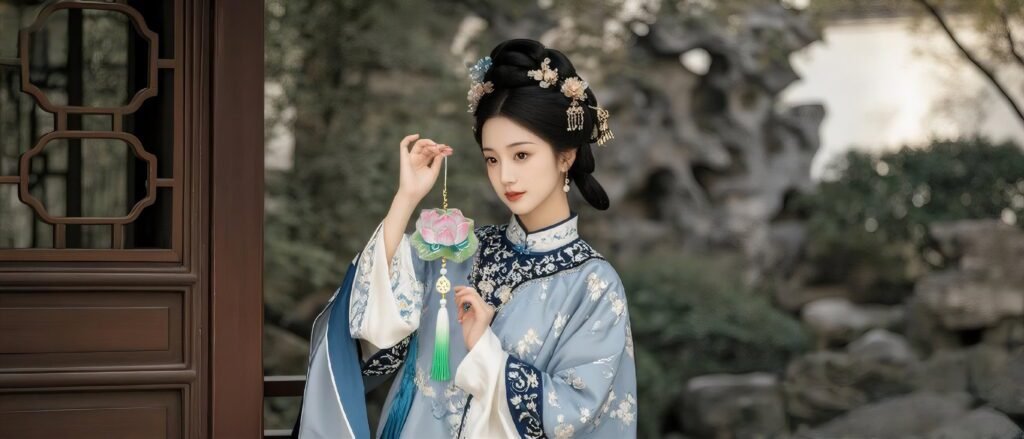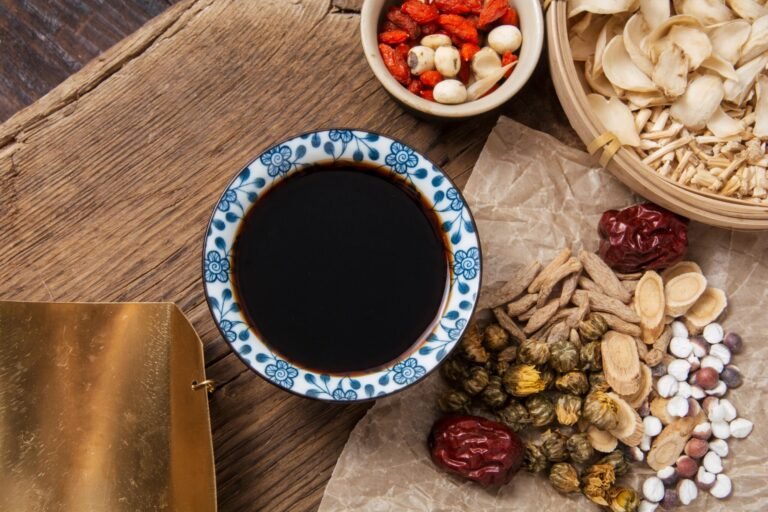Traditional Chinese Aromatherapy: The Healing Power of Fragrance
A Gentle, Scented Path to Balance and Well-being
When people think of Chinese medicine, they often imagine bitter herbal decoctions or acupuncture needles—but one of the most subtle and beautiful therapies in the tradition is something we breathe in every day: fragrance.
Traditional Chinese Aromatherapy, or TCM Fragrant Therapy, is a healing practice that combines the wisdom of Chinese medicine with the natural power of aromatic herbs. It’s not just about smelling something pleasant—it’s about using scent and herbal properties to gently adjust the body’s energy, regulate qi and blood, and harmonize yin and yang. And the best part? It’s external, non-invasive, and deeply nourishing to both body and spirit.
Here’s how it works, from its classical roots to how we use it in daily life today.

The Theory Behind It
1. A Holistic View of Healing
In Traditional Chinese Medicine, the human body is part of a larger natural system. The principle of “unity of heaven and humanity” suggests that herbal aromas, when inhaled or absorbed through the skin, travel through meridians to influence the organs, qi (energy), and blood. Ancient texts like Huangdi Neijing say, “The nose is the opening of the lungs.” That means what we smell doesn’t just affect the brain—it enters the lungs and influences the body’s whole energy flow.
2. Aromatic Herbs Have Direction and Character
Most fragrant herbs are pungent and dispersing in nature—they move, open, warm, and lift. TCM teaches that *“pungent herbs travel and penetrate”—*meaning they can reach deep into the body and affect both the surface and internal systems.
For example:
- Warm and spicy herbs like sandalwood and mugwort move qi, warm the meridians, and dispel cold.
- Cool and light herbs like mint and borneol clear heat, open the orifices, and calm the spirit.
These herbs aren’t just scent—they’re medicine.
Common Herbs & Their Effects
Here are some popular herbs used in TCM aromatherapy, and how they help:
| Herb | Nature | Major Benefits | Common Uses |
|---|---|---|---|
| Sandalwood | Pungent, warm | Moves qi, calms the spirit | Anxiety, bloating, spiritual grounding |
| Mint | Pungent, cool | Clears head, opens nose | Headache, nasal congestion |
| Mugwort | Pungent, bitter, warm | Warms meridians, dispels damp-cold | Menstrual pain, fatigue |
| Patchouli | Pungent, warm | Resolves dampness, harmonizes the stomach | Nausea, summer colds |
| Lavender | Mildly warm | Calms the nerves, improves sleep | Stress, insomnia |
| Borneol | Pungent, cold | Opens the orifices, clears heat | Dizziness, throat pain |
| Chinese Atractylodes | Pungent, warm | Strengthens spleen, clears damp | Edema, heavy limbs |
How It’s Applied
1. Inhalation Methods
- Direct Smelling: Sniffing sachets, crushed herbs, or essential oils. Mint or magnolia flower can relieve sinus pressure and clear the head.
- Steam Therapy: Herbs like mugwort or chrysanthemum are boiled, and the steam is inhaled. Great for colds, sinus, or skin health.
- Diffusers: Modern water or heat diffusers can disperse essential oils like sandalwood or orange for emotional balance.
2. Skin Absorption
- Massage or Topical Use: Diluted essential oils are applied to acupuncture points—like mint oil on the temples for headaches, or lavender on the neck for tension.
- Herbal Baths or Foot Soaks: Warm water with ginger, mugwort, or wormwood can help with poor circulation, fatigue, or menstrual issues.
3. Environmental & Protective Aromatherapy
- Aromatic Sachets (xiangnang): Small pouches of herbs like clove, patchouli, and Chinese calamus, worn or placed under pillows to ward off pathogens and uplift the mood.
- Incense Burning: Ground herbal incense (e.g. sandalwood, agarwood) is burned in a censer to calm the mind and purify the space. Used in ceremonies or before sleep.
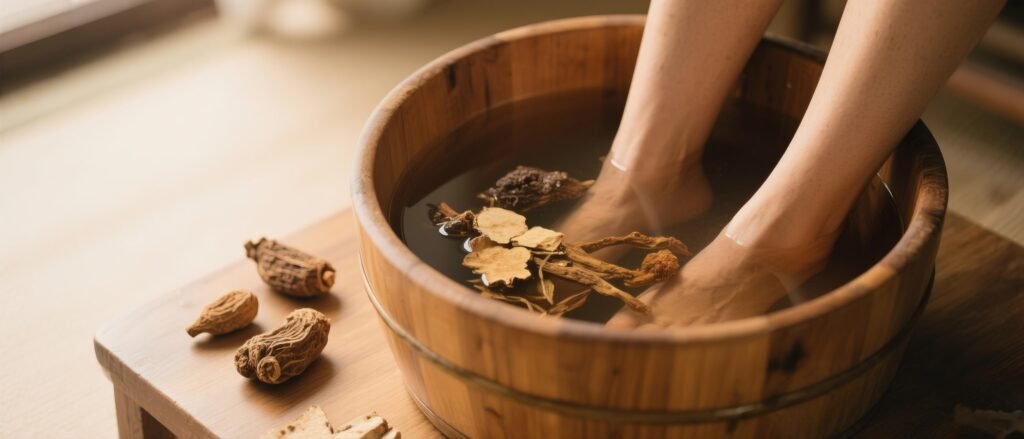
What It Can Help With
Chinese aromatherapy is versatile. Here are just a few of its most common uses:
- Respiratory health: Mint, mugwort, or borneol for colds, sinusitis, or cough.
- Emotional wellness: Lavender and rose to ease anxiety, irritability, or sleeplessness.
- Digestive issues: Patchouli and atractylodes for bloating and poor appetite.
- Women’s health: Mugwort or ginger for menstrual cramps and cold uterus.
- Skin issues: Chrysanthemum or honeysuckle steam for eczema and inflammation.
- Prevention & immunity: Wearing sachets or burning mugwort to clear “bad qi” during seasonal transitions or flu outbreaks.
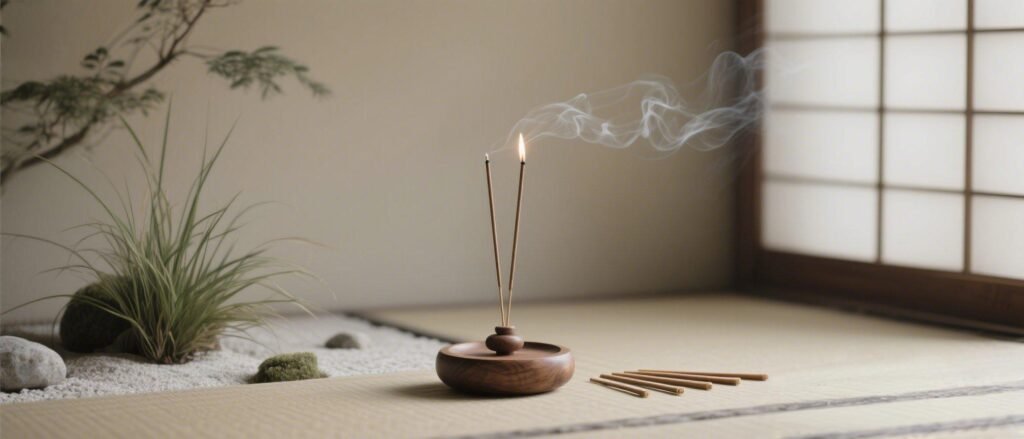
Key Strengths & Safety Tips
Strengths:
- Personalized: Herbs are selected based on body type and season—warming herbs in winter, cooling ones in summer.
- Mind-body connection: Fragrance calms the nervous system and supports emotional healing—perfect for stress, burnout, or fatigue.
- Safe & gentle: Non-invasive, low risk, and suitable for children, elderly, and those who can’t tolerate internal medicine.
⚠️ Cautions:
- Pregnancy: Avoid strong aromatic herbs like musk, safflower, or cinnamon during pregnancy—they can stimulate uterine contractions.
- Allergies: Always patch-test new oils or herbs to avoid skin irritation.
- Excess heat: In acute infections or high fever, avoid warming incense or essential oils that could intensify the condition.
- Ventilation: Always burn herbs or incense in a well-ventilated space.
Modern Research & Innovation
Modern studies now confirm what Chinese healers have long known—volatile oils from herbs like eucalyptus, mint, and mugwort have anti-bacterial, anti-inflammatory, and immune-modulating properties. At the same time, essential oil technology allows for cleaner, more convenient use, while staying true to the core principle: scent as medicine.
A Scented Tradition for Modern Living
Chinese aromatherapy isn’t just about fragrance—it’s about energy, intention, and the delicate art of harmony. Whether you’re using a sachet tucked into your coat, lighting incense before meditation, or adding a few drops of oil to your evening bath, these moments are more than routine—they’re rituals.
What I love most is how this practice meets you where you are—gently, without force. It offers comfort, support, and subtle shifts that build over time.
So the next time you’re feeling off, instead of reaching for something synthetic, try reaching for the wisdom of the ancients—inhale, exhale, and let the herbs do the rest.
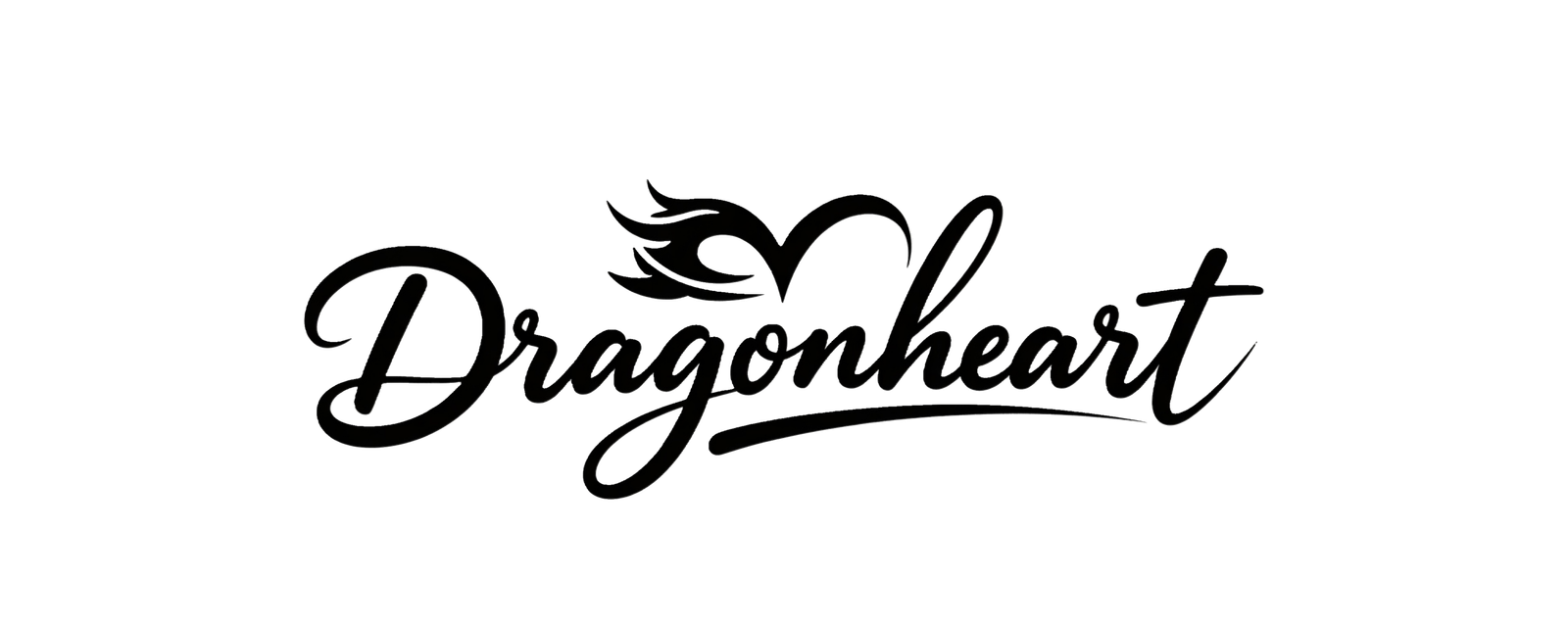
 Er Su Jiu Ju | Handmade TCM Incense Pills for Calm & Focus | Sandalwood & Amber | DragonHeart
Er Su Jiu Ju | Handmade TCM Incense Pills for Calm & Focus | Sandalwood & Amber | DragonHeart 